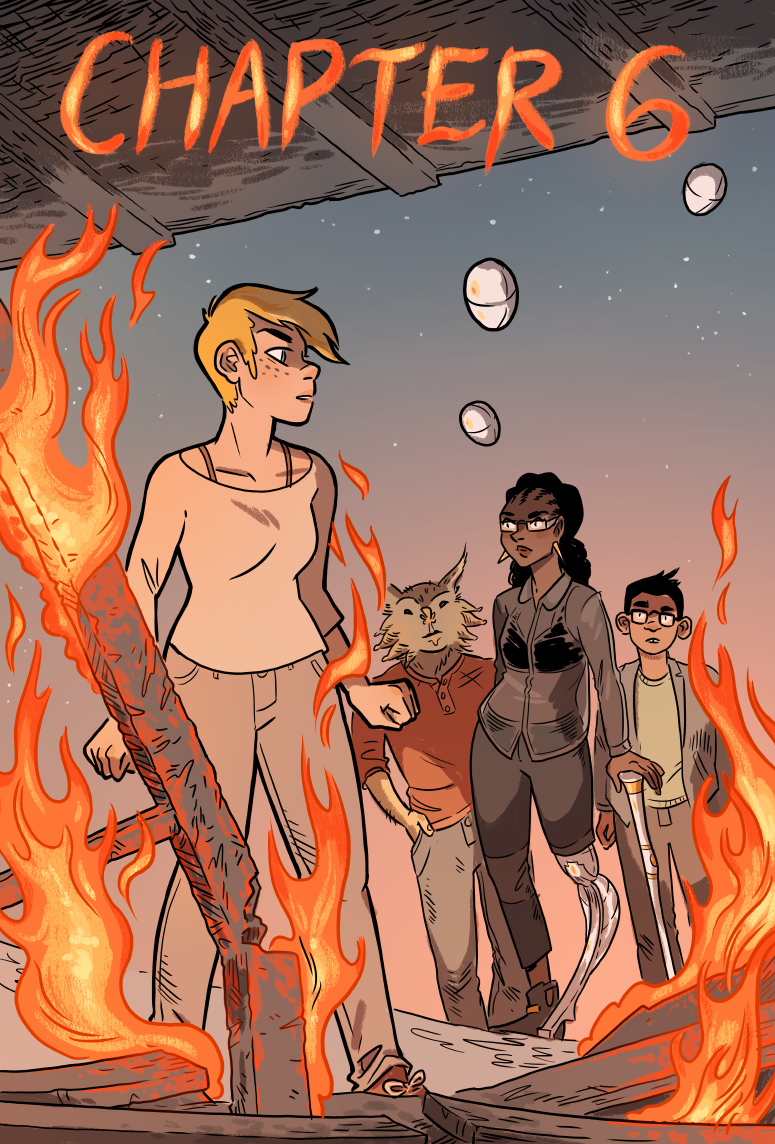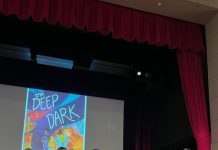By Maggie Vicknair
As a teenager, Alison Green was Mega-Girl, a member of the world’s foremost superhero team, until one day she quit dramatically on live television. After an eye-opening conversation which her former arch-nemesis She had realized that all the capes, costumes, and epic battle’s weren’t really helping anyone long term. Now, no longer a superhero but a college freshman, Alison is trying to figure out what it really means to save the world.
Strong Female Protagonist is a superhero webcomic written by Brennan Lee Mulligan with art by Molly Ostertag. Of all the superhero comics I read (and I read a lot), SFP feels the most current.
When art tries to be capital-C Current, it often fails in one of two ways. It either plasters on new lingo, peppering the dialogue with words like “hacktivist” or “vlogger,” or it only tries to capture the anger or fear of a current situation. Both of these approaches feel like someone is trying to capitalize on trends rather than engage with them. Strong Female Protagonist (despite it’s cheeky tvtropes-ish title) on the other hand, feels tuned in to the conversations happening around it right now. The main reason for that is because of its central metaphor.
Superhero stories are always metaphor laden. The X-Men can represent any oppressed group while the Hulk is a story about anger management issues. Alison’s powers are a stand in for privilege. Alison is super strong, invulnerable, white and middle class. As a teenager she didn’t question the advantages she was born with, but as she graduates into adulthood she is confronted by the unintended consequences of her actions. She is continually faced with the limitations of good intentions and has to question all her previously held beliefs. Most of the action of SFP is not building-smashing but Alison having long conversations with people grappling with the same questions she is. Some turn to extreme martyrdom, violent vigilantism, or focusing on scientific advancement. SFP is both a coming-of-age story and a deconstruction of superhero tropes. Like most good ideas, it feels amazing someone hasn’t done it before.
SFP’s metaphors vary in how ‘on the nose’ they are. For example, there’s a recent arc where a friend of Alison’s creates a support organization for those whose powers have altered their bodies dramatically. The story arc grapples with how to serve an extremely diverse group of people, and the language reflects the discussions in LGBTQ communities. Meanwhile, Patrick, a mind-reading former super villain who may or may not be reformed, is a character whose powers sometimes feel analogous to a mental disability, but are never a stand in for something concrete.
The comic starts out in black and white with gray marker, but blooms into a full color affair. Ostertag’s art starts out fine, but has greatly improved. Her color work is particularly lovely. The character designs reinforce the modern sensibility of the comic. Every character is specific and real looking, and Ostertag has a good eye for fashion.
While I want to focus on the comic itself, I feel I should mention the comments section briefly to illustrate my point of SFP being plugged into The Conversation. Most webcomics have a space for of comments, and SFP has a dedicated number of fans who respond to each page. It’s interesting to see how the commentariate reflects the main character, as they dissect each interaction and debate each decision.
If you’ve read this and think, “A superhero comic where people talk A LOT about social justice, whoo hoo!” then this is the comic for you. It’s a very contemplative comic that’s beautiful to look at, and provides a refreshing take on superhero deconstruction.
Strong Female Protagonist updates reliably Tuesdays and Fridays.









SFP is great, though I’d rather call it a smart alt-superhero comedy/action/drama/mystery webcomic? I like to compare it to the “Earth Stories” from ZOT, or some of the good bits from TOP TEN and the original POWERS! It’s about how to change yourself and change the world without only punching things.
As you noted, “Ostertag’s art starts out fine, but has greatly improved” — though one wouldn’t know she was still in art school when she started on it, heh. (Also, each online page has XKCD-like mouseover notes!)
The first trade is still available from Diamond as TRU/Star code JUN148321. I stopped reading it online when they solicited it because I wanted to keep fresh stuff to read in print… but the second book has yet to materialize, waaah! (The only people who seem to have noticed SFP in the hostile DM seems to be The House of Copies, who promptly bastardized the concept as THE UNBEATABLE SQUIRREL GIRL.)
The first online issue is a good place to get the bug, but one could also sample the 5 pages from http://strongfemaleprotagonist.com/issue-2/page-14-2/ (a TV-interview flashback of why she quit to become a college student, as it’s the gist of the character)
P.S.: Maggie, your link to their site is broken by a “mailto” in front.
“When art tries to be capital-C Current, it often fails in one of two ways. It either plasters on new lingo, peppering the dialogue with words like “hacktivist” or “vlogger,”
When social justice warriors try to be “Current”, just like other activists, they end up being preachy and out of touch.
It’s a general privilege for people to express themselves however they’d like without worrying about losing their job, or the respect of people in their social circle.
Intersectional identity politics are the politics of the wealthy and idle.
The scene where that blue skinned woman can’t decide whether she identifies as a man or woman most of the time is ridiculous but it’s not too far from reality, with activist Rachel Dolezal ( born into an affluent household) being a white woman who convinced herself she was black.
Or the Otherkin people coming out of the woodwork claiming that they identify as animals and want to be taken seriously.
This–THIS STUFF is what is CURRENT–this is what the average person should be more concerned with.
I honestly can’t unambiguously identify the political bias behind this comic, or even if there IS one; I vacillate between thinking it’s pro-“social justice” and thinking it’s a stealth parody (sort of an inverse Colbert Report), which means that, for me personally, they’re getting the mix just about perfect.
Case in point: the update today (Oct 4 2016) has the protagonist literally strong-arming someone into going along with her plan and threatening him with death if he doesn’t comply. Is that the work of an SJW not realizing how closely that resembles Fascism in methodology if not ideology, or of someone who realizes EXACTLY that same thing and is deliberately making a point of it? I can’t tell, which is why I could recommend the comic to anyone regardless of political leaning.
Comments are closed.